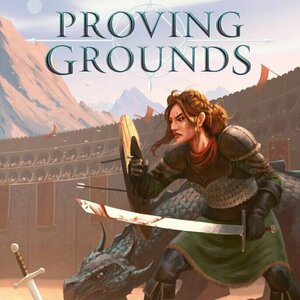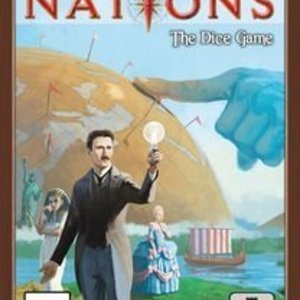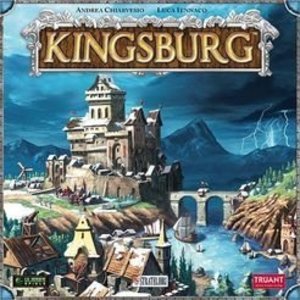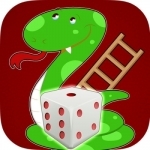
Flashy Snake And Ladders Game Two Player Classic
Games and Lifestyle
App
Snake And Ladder or Chutes And Ladders, is one of the most fun classic dice games that both kids and...
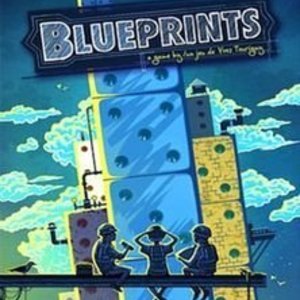
Blueprints
Tabletop Game
In Blueprints, players are architects who must use different colored dice to build three different...
BoardGame AbstractGame DiceGame
Purple Phoenix Games (2266 KP) rated Proving Grounds in Tabletop Games
Aug 23, 2021
Proving Grounds is a solo fighting dice game with real-time phases. Players will win by defeating eight opponents in battle and will lose (often, in my case) if the heroine suffers too many wounds. The game is played over several rounds, and Renegade has provided an app to act as a timer during the rolling dice phase. Obviously I am terrible at the game, but how does it play and do I feel like continuing to suffer subsequent losses?
To setup a basic game, place the Encounter Board in the middle of the table. Shuffle the enemy cards (with swords & board backs) and deal one per slot around the Encounter Board. These are the first set of enemies Maia will be fighting. Place Battle Markers (silver ninja stars that track wounds inflicted to enemies) in the outlined spaces of the enemy cards. Place Maia’s health token (a heart) on the tracker and one each of the green, yellow, and blue dice on the health area in the space with a rainbow surround. Fill the exhaustion track with one white die per space (on the right side of the Encounter Board), and take the rest of the dice into hand to use as the dice pool. For this review I also used the Dragonling Die module.
As mentioned, Proving Grounds is played solo over a series of rounds. Each round consists of three phases: Roll Dice, Resolve Attacks, and Recover. The first phase of the game, Roll Dice, is also the most chaotic. During this phase the app timer (or your phone or sand timer or sun dial) will allow 60 seconds to roll the dice and arrive at a final result. The interesting aspect of this mechanic at play here is that only sets of dice may be rerolled, not singles. So players may only roll that set of four 3s and not the solitary 1 sitting there all alone. This causes some brain freeze because many games utilize this in reverse, where only singles may be rerolled. Factor that into a 60 second frenzy to get the greatest results and brains will smoke.
Once the timer is up or players are satisfied with the rolled results, they move to the next phase: Resolve Attacks. Each number rolled on the dice correspond to the enemy’s position around the Encounter Board. So that solitary 1 that was rolled earlier is assigned to the enemy in position #1. Here’s the kick in the rear though: any single dice assigned to an enemy will result in a wound dealt to Maia, and would require the player to sacrifice one of the dice to the exhaustion track! Should an enemy require three or more dice but only two are assigned, or if zero dice are assigned, nothing happens to Maia nor the enemy. But those dang single dice will come back to haunt the player. A lot, if they play like I do. Some enemies will require at least one of the dice to be the blue/green/yellow die in order to be successful while others are just straight number of dice. Calculating everything that is needed during the Roll Dice phase is something that I have yet to master.
After attacks are resolved, players enter the Recover phase. During this phase players will gather all assigned dice from the round as well as any dice on the lowest spot of the exhaustion track to be used for the next round. Any enemies that were defeated have left an empty slot on the Encounter Board, so a new enemy will now fill that void. Play continues in this fashion of three phases per round until either eight enemies have been defeated or Maia suffers too many wounds to continue.
Components. I am fascinated by how few components are needed to put a game like this together. Yes, the Encounter Board is mostly unnecessary, but a great way to organize the game and keep everything spacially relevant for those of us that need that. The cards are fine quality and the game has great art. The dice are very cool, but I am unsure how the colors pop for our colorblind gamer friends. While the game doesn’t necessarily refer to the damage markers as “ninja stars” I cannot get over the fact that they are ninja stars. They are certainly out of place in a game like this where I encountered zero ninjas in my plays. Everything else, though, is great and it comes in a nice-sized box: a little smaller than my Century: Golem Edition box.
It was Kane Klenko’s birthday recently, so I wished him a happy birthday on social media and informed him that I was celebrating by playing Proving Grounds. His response was absolutely perfect: “Good luck!” Well, Kane, I never have good luck with this one! It is certainly a combination of poor dice rolling, poor decision making whilst rolling dice, and just dumb luck (emphasis on dumb). I love playing this game but it is infuriating that I have yet to beat it! Even with just the first Dragonling Die module! Gahhhhhh!!!
However, Proving Grounds is an excellent dice game that breaks out of the Yahtzee clone mold and into something fresh and exciting. The twist of only being able to reroll sets instead of singles makes for interesting decisions when you really need to defeat enemy #5 but just cannot roll ANY 5s to save your life (in the game). I just want to beat it once with the Dragonling Die so I can start adding in other modules (oh yes, there are several other modules to add). When games force me to WANT to play them more and more, even for the sheer hope of victory, I consider that a mark of distinction and a sign of a great game.
So if you are like me and enjoy the pain of defeat over and over again then I invite you to try Proving Grounds. It will not be easy. But if you happen to beat it, especially on your first try, please let me know. I need all the cheat codes I can get here. It will stay in my collection probably forever because I just need to overcome it, and then once I figure it out completely, I will just need to wallop it over and over to teach it a lesson. Enjoy Proving Grounds everyone!
Purple Phoenix Games (2266 KP) rated Nations: The Dice Game in Tabletop Games
Aug 16, 2019 (Updated Jul 17, 2021)
Nations: The Dice Game (can I please just call it Nations for this review as we know I am not talking about the original? Thanks.) is a civilization building, upgrade tile drafting, dice game for one to four players. Players will be upgrading their civilizations over four game rounds to compete for Books and VPs. The player with the most VP at the end of the game is the winner.
Disclaimer: The photos shown here is for a solo game, as I took them during my learning game using the solo rules. Normally the purple d4 is not used in multiplayer games. -T
To setup, each player will choose a starter civilization mat, receive five white dice, a gold chit, and a re-roll chit. Player order will be determined by cards and each player will receive their player order card which doubles as a reference card (great idea). The Progress Board will be set on the table and populated with randomized Age I Progress tiles according to the rule book. The Score Board will also be placed on the table to track Books, Events, and final VPs. The game begins with each player rolling their five dice.
Nations (TDG) is played over four ages with multiple rounds per age. At the beginning of each age old tiles will be removed from the Progress Board and new ones for the current age added. Also an Event tile will be drawn and placed on the Score Board to signify goals for Famine and War at the end of the age. On a player’s turn they will take one action from the following: Re-Roll (any or all unused dice by spending a re-roll chit), Buy tile (from the Progress Board to upgrade player mat spaces and dice), or Build Wonder (tile using Stone dice or chits for VP). When a player has taken as many turns/actions they wish for the age, they turn their player order card to the side to indicate they have passed for the remainder of the age.
Once all players have passed, they will tally their unused dice and any chits showing Books to be recorded on the Book track. Players will score points for Books based on how many opponents they have outscored for Books. Then players will consult the face-up Event tile that was revealed at the beginning of the round. The top portion displays VP earned when players discard unused dice and chits showing Famine leaf icons matching or exceeding what is on the Event tile. Similarly, for War players will consult the Event tile and use the sword icons on unused dice and chits to score any VPs for War. Play continues in this way across all four ages and once the fourth age has been scored the game ends and winner named victorious!
Components. I have mostly good news here. The dice in this dice game are wonderful. They are all easy to read and understand, and feel great when rolling nine or ten of them at once. The chits are fine, the Progress and Event tiles are nice and thick. The player mats, Score Board, and Progress Board are very thin though. I was going to give that a negative remark, but you know, players don’t really handle them during the game so there is no real need for them to be any thicker. The art is similar as in Nations, and while it does not resonate with me, it is fine. I won’t be playing Nations for the art.
All in all the game is fine. It didn’t blow me away or completely replace Nations (the big game) for me. It IS a pretty quick game to play, so there is one definite improvement over the big brother game; 10-15 minutes per player is pretty spot on. I usually do not prefer dice games to the originals (BANG! The Dice Game being the obvious improvement), and this one is really just on par with the big game. While it takes up less space on the shelf, I wouldn’t necessarily recommend it over its sibling. I feel the same way about each game, so my recommendation is get the version you feel would be played more often. Purple Phoenix Games gives Nations: The Dice Game a Montezuma-should-be-in-Age-IV 6 / 12. Give it a shot if you are into dice games, but grab the original if you want something meatier.
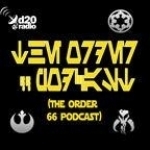
Order 66 Podcast
Podcast
All things Star Wars Role Playing (Fantasy Flight Games), from classes to campaigns to the dice and...

FilterCopy
YouTube Channel
Freshly brewed videos from the sharable content platform of Pocket Aces. We make awesome short...
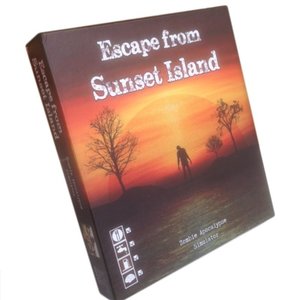
Escape From Sunset Island
Tabletop Game
After the zombie apocalypse swept through civilization, Sunset Island remained one of the last...
The Marinated Meeple (1853 KP) rated Kingsburg in Tabletop Games
Aug 24, 2018

Snakes & Ladders Online Prime
Games and Entertainment
App
Snakes & Ladders also known as "Chutes and Ladders" in the United states. It can be played by up to...
